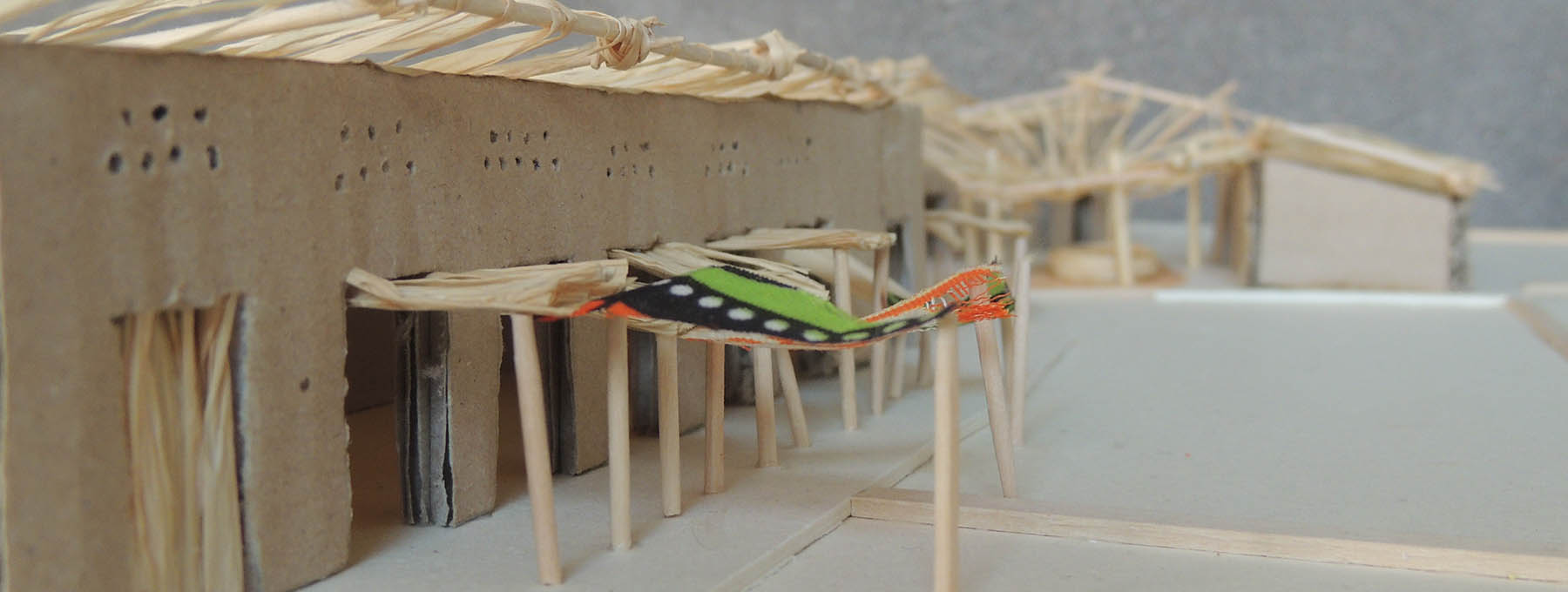Home / Kaira Looro / I Temi del workshop / Gli studi / Programma / Download / Sponsor / Il progetto sostenuto / Iscrizioni / Contatti

The cultivation of rice in Senegal was imported by the French in the second half of the 800 and today, although production is insufficient, rice is the principal food of the country. The entire production process is entrusted to women who cultivate the fields, collect rice and work to distribute it between the villages. To reach the fields women must to walk several kilometers, bringing with them the younger children to look after them during breaks in the work. The current production does not exceed the subsistence level because most of the once fertile land has been contaminated by the tides, the construction of the bridge-dam Balou Salo will create extensive arable fields. The project of the Centre gathering and sorting rice allowed us to think about a building that will improve the living and working conditions of the women involved in the production and of their children. It is a building that currently does not exist because the product of the fields is limited but that will become crucial when the remediation will enlarge the production. Starting from the premise that the "rice house" is the seed that will germinate wealth in the valley Tanaf we called our center "Rice for Rise" by choosing to develop a project capable of responding not only to the functions of production and distribution of the rice but also able to create a place where women can share your breaks and dedicate themselves to the care of children who will can play and stay protected while their mothers work. The rice fields are characterized by an ever-changing landscape that, during the year, returns a wide palette of colors that from brown of barren land, reach the blue and green of the irrigated fields, the mirror of the fields filled with water and, finally, the green and yellow of the rice. The center is a permeable building that interacts with the landscape and records the changing nature of its colors, sounds and scents. In order to decide the location and the shape of the building we have considered the two main winds that cross the valley: the violent and wet Monsoons from which the building needs repair and the weakest Harmattan which creates a more dry and healthy climate. The plant of the center is based on the aggregation of two buildings: one with organic shapes with longitudinal development within which follow each other spaces for storage of the harvest, processing and packaging of rice and an additional space where children are housed, with a small kitchen and a common room where women can rest, eat and pray. The two buildings are connected by a courtyard covered by a woven straw roof that in addition to providing shade, allows you to collect rainwater into a well that is the center of community life. Thanks to a mobile system that transforms the doors in pergolas a part of the work can be carried in outdoors spaces. The building is a flexible system that can be transformed taking into account the functional needs and the weather conditions and is therefore a changing body with a breath modulated with that of the surrounding environment. The two buildings are made of adobe bricks protected by plaster, the aggregation of the bricks at the top of the building and the entire wall of the collective space creates a texture of solids and voids that does filter light, air and colors of the African landscape by mitigating the temperatures of the interiors. The double roof brings a ventilated system that guarantees the best internal temperature conditions, the first curvilinear roof is made of bricks abobe, the top cover is made with a system in wood and braided straw. The construction techniques are very simple and then we imagine that, during the construction, we will be able to involve local people that can acquire new knowledge. The Centre gathering and sorting rice will be the engine of development of the area because in addition to promoting exchanges between the little villages that will use it, the better organization of production will allow the development of related activities that generate new forms of economy. Near the rice's center will be possible to create a cooking school, several laboratories for the production of the rice's derivatives (as flour and rice milk), for the production of rice paper and for the realization of building materials reusing the production waste. So our house rice is the seed for the rebirth of the Tanaf valley populations.
Project by:
Pilar Diez Rodriguez
AutonomeForme_Marco Scarpinato, Lucia Pierro
Gadea Burgaz Andrés, Gaia Cassia, Provvidenza Rita D’urso, Claudia Messina, Giovanna Roncuzzi, Vincenzo Sichera, Daniele Tomei, Eleonora Vinci
